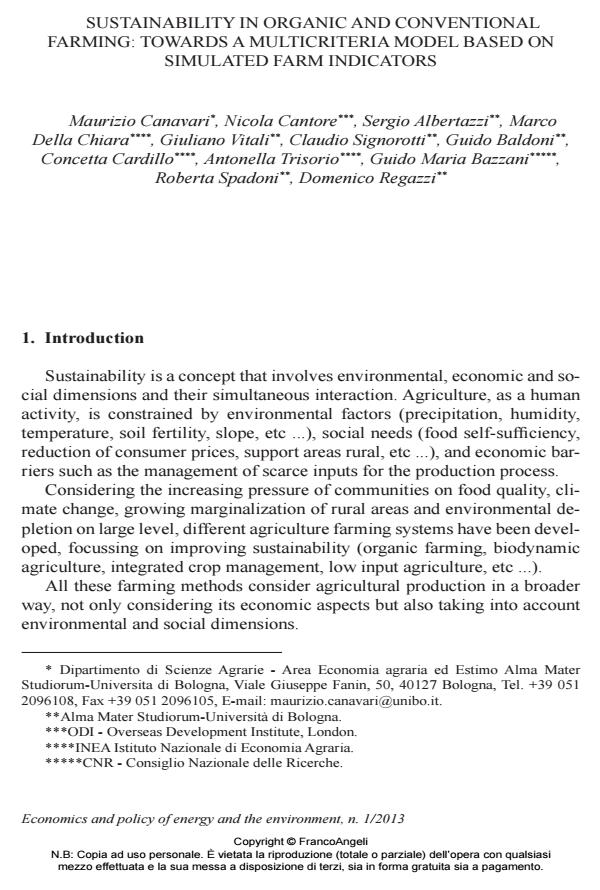Sustainability in organic and conventional farming: towards a multicriteria model based on simulated farm indicators
Titolo Rivista ECONOMICS AND POLICY OF ENERGY AND THE ENVIRONMENT
Autori/Curatori Maurizio Canavari, Nicola Cantore, Sergio Albertazzi, Chiara Marco Della, Giuliano Vitali, Claudio Signorotti, Guido Baldoni, Concetta Cardillo, Antonella Trisorio, Guido Maria Bazzani, Roberta Spadoni, Domenico Regazzi
Anno di pubblicazione 2013 Fascicolo 2013/1
Lingua Inglese Numero pagine 26 P. 175-200 Dimensione file 921 KB
DOI 10.3280/EFE2013-001009
Il DOI è il codice a barre della proprietà intellettuale: per saperne di più
clicca qui
Qui sotto puoi vedere in anteprima la prima pagina di questo articolo.
Se questo articolo ti interessa, lo puoi acquistare (e scaricare in formato pdf) seguendo le facili indicazioni per acquistare il download credit. Acquista Download Credits per scaricare questo Articolo in formato PDF

FrancoAngeli è membro della Publishers International Linking Association, Inc (PILA)associazione indipendente e non profit per facilitare (attraverso i servizi tecnologici implementati da CrossRef.org) l’accesso degli studiosi ai contenuti digitali nelle pubblicazioni professionali e scientifiche
In this paper we report our efforts to develop an inter-temporal model for the evaluation of the impact of organic farming on greenhouse gases emissions, that we called BIOSUS-MAD. The model focuses on the maximization of farmer’s net income though different crops rotations constrained to the use of resource inputs; outputs of this optimization process are numerical values for key variables useful to estimate a set of social, economic and environmental indicators. These indicators will feed a multi-criteria model providing a synthetic and comparable sustainability overall index. This approach makes MAD a potentially useful tool for policy-makers to get an ex-ante assessment of the effects of agro-environmental policies. The model can manage different scenarios and could provide useful information to policy makers by running simulations incorporating European economic and/or environmental policies.
Parole chiave:Sustainability, multicriteria analysis, farming, agricultural economics
Jel codes:Q15, Q16, Q57
- Using FADN Data to Estimate CO2 Abatement Costs from Italian Arable Crops Guido M. Bazzani, Giuliano Vitali, Concetta Cardillo, Maurizio Canavari, in Sustainability /2021 pp.5148
DOI: 10.3390/su13095148
Maurizio Canavari, Nicola Cantore, Sergio Albertazzi, Chiara Marco Della, Giuliano Vitali, Claudio Signorotti, Guido Baldoni, Concetta Cardillo, Antonella Trisorio, Guido Maria Bazzani, Roberta Spadoni, Domenico Regazzi, Sustainability in organic and conventional farming: towards a multicriteria model based on simulated farm indicators in "ECONOMICS AND POLICY OF ENERGY AND THE ENVIRONMENT" 1/2013, pp 175-200, DOI: 10.3280/EFE2013-001009